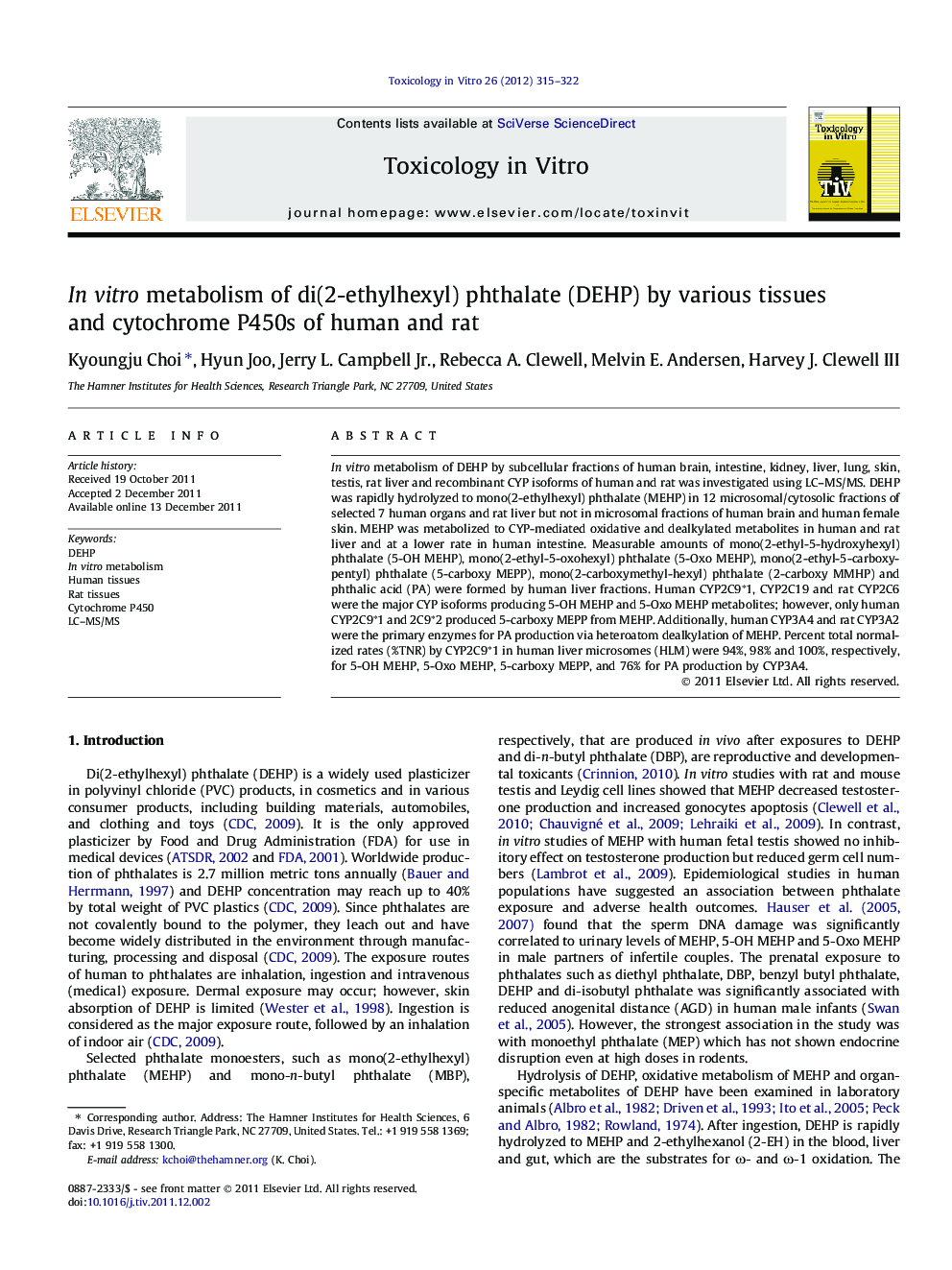| Article ID | Journal | Published Year | Pages | File Type |
|---|---|---|---|---|
| 5863076 | Toxicology in Vitro | 2012 | 8 Pages |
In vitro metabolism of DEHP by subcellular fractions of human brain, intestine, kidney, liver, lung, skin, testis, rat liver and recombinant CYP isoforms of human and rat was investigated using LC-MS/MS. DEHP was rapidly hydrolyzed to mono(2-ethylhexyl) phthalate (MEHP) in 12 microsomal/cytosolic fractions of selected 7 human organs and rat liver but not in microsomal fractions of human brain and human female skin. MEHP was metabolized to CYP-mediated oxidative and dealkylated metabolites in human and rat liver and at a lower rate in human intestine. Measurable amounts of mono(2-ethyl-5-hydroxyhexyl) phthalate (5-OH MEHP), mono(2-ethyl-5-oxohexyl) phthalate (5-Oxo MEHP), mono(2-ethyl-5-carboxypentyl) phthalate (5-carboxy MEPP), mono(2-carboxymethyl-hexyl) phthalate (2-carboxy MMHP) and phthalic acid (PA) were formed by human liver fractions. Human CYP2C9â1, CYP2C19 and rat CYP2C6 were the major CYP isoforms producing 5-OH MEHP and 5-Oxo MEHP metabolites; however, only human CYP2C9â1 and 2C9â2 produced 5-carboxy MEPP from MEHP. Additionally, human CYP3A4 and rat CYP3A2 were the primary enzymes for PA production via heteroatom dealkylation of MEHP. Percent total normalized rates (%TNR) by CYP2C9â1 in human liver microsomes (HLM) were 94%, 98% and 100%, respectively, for 5-OH MEHP, 5-Oxo MEHP, 5-carboxy MEPP, and 76% for PA production by CYP3A4.
⺠The hydrolysis of DEHP to MEHP by microsomal and/or cytosolic esterases in organs. ⺠MEHP was metabolized by CYP-dependent oxidation and dealkylation in human organs. ⺠Human CYP2C9*1/3A4 and rat CYP2C6/3A2 were the major CYP enzymes toward MEHP. ⺠Polymorphic effect of human CYP2C9*2 and CYP2C9*3 on MEHP metabolism. ⺠Species difference in hepatic metabolism of DEHP/MEHP between human and rat.
